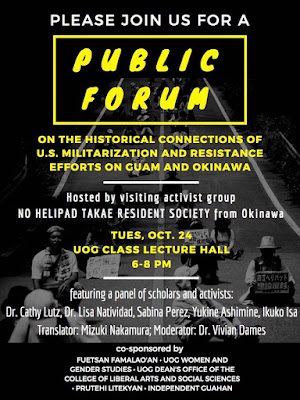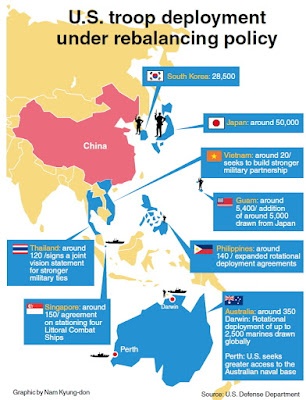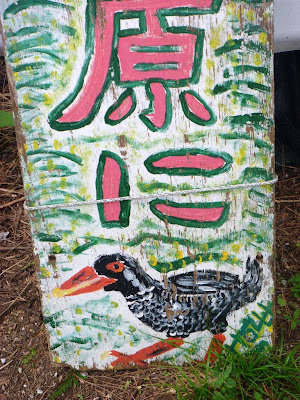Takae Village Residents Visit Guam to Share Their Story of Struggle

Okinawa Activists on Guam to Share Struggles and Support Community’s Request to Halt Construction of Marines’ Range at Northwest Field FOR IMMEDIATE NEWS RELEASE (October 23,2017 – Hagåtña) A community collective comprised of members of Independent Guåhan, Prutehi Litekyan: Save Ritidian, the Guåhan Coalition for Peace and Justice, Fuetsan Famalao’an and the University of Guam’s Women and Gender Studies Program are collaborating to host a week-long visit with a group of grassroots activists from Okinawa called No Helipad Takae Resident Society. The No Helipad Takae Resident Society is committed to protecting their village, which is the location of the Yanbaru Rainforest, the main source for fresh drinking water in Okinawa and home to thousands of endemic species, many of which are listed as critical or endangered. In 1957, the U.S. military began using the Northern Training Area in the Yanbaru rainforest as a jungle warfare-training site for U.S.


